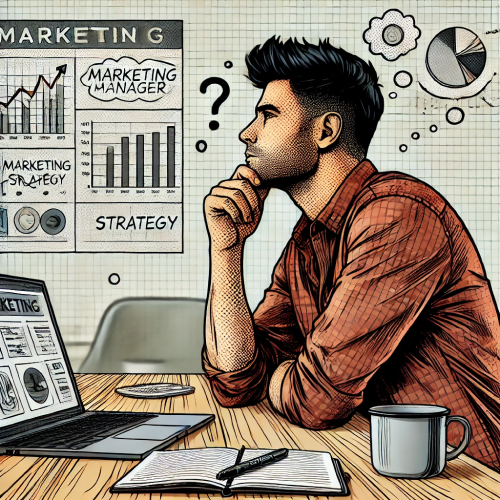Bounce rate is a metric that e-commerce businesses often track to understand how well their site engages visitors. But beyond just being a measure of user engagement, bounce rate also represents a significant opportunity cost. Every visitor who leaves your site without taking action is a missed chance for revenue and growth.
In our previous posts, we explored bounce rate and how to reduce it. Now, let's look deeper at why high bounce rates can be so costly and how to prioritize improvements that turn these lost opportunities into gains.
Definition of Cost of Opportunity
Let's start by defining the cost of opportunity. In simple terms, the cost of opportunity refers to the potential revenue lost when visitors leave your site without taking the next step—whether that's exploring more pages, engaging with content, or making a purchase.
High bounce rates don't just signal a loss in visitor engagement; they represent missed revenue opportunities. However, every time a visitor bounces, you miss out on a chance to convert them into a paying customer, build a relationship, or gain loyalty. The good news is that by understanding and addressing these issues, you can significantly increase your revenue and growth potential.
Putting a Monetary Value to the Lost Visitors
Now that we understand the concept let's look at assigning a monetary value to bounced visitors. This will help you better grasp the financial impact of high bounce rates and prioritize the most crucial pages for optimization.
Here's a simple formula to estimate the potential revenue loss:
Potential Revenue Loss = (Number of Bounced Visitors) × (AOV) × (Expected Conversion Rate)
Let's start with the value.
The Average Order Value can help us calculate the potential revenue. Suppose the average order value of one of your products is $80.
Now, let's add how much money we can capture from that product using the average conversion rate of your website. Let's say 2%.
With the conversion rate and average value, we can say that for every 1,000 visitors who visit the product page the potential revenue is $1,600.
Now, what happens when we have a high bounce rate (anything higher than 70%)?
This calculation shows just how costly high bounce rates can be, especially on key products or landing pages.
How This Low Conversion Scenario Hurts Acquisition Costs and Conversion Metrics
High bounce rates don't just impact user engagement; they directly affect your paid acquisition efforts and overall marketing efficiency. Here's why it matters:
Impact on Paid Channel Algorithms
Low engagement on the landing pages of your acquisition campaigns sends a negative signal back to the algorithms of paid channels like Meta, TikTok, and Google Ads. Since these platforms' revenue models rely heavily on advertising, delivering a good user experience is crucial. When your landing pages show low engagement or high bounce rates, these platforms may reduce the reach and visibility of your ads. On the other hand, better engagement results in your ads being served to more people, ultimately lowering your campaign costs.
Diluted Cost per Acquisition (CPA)
High bounce rates mean that a large portion of your paid visitors aren't converting, which makes your cost per acquisition higher.
Let's say you invest $3,000 on a campaign.
Results are 21 sales and an average order value of $70, $1,470.
During the analysis you find out that you attracted 1,000 visitors, the bounce rate is 70% bounce rate and conversion rate to checkout 3%.
So, your cost per acquisition is budget/customers.
In numbers, 3,000 / 21 = $142 for each customer.
You still need $72 from these new customers to get a break even on the cost of acquisition.
Now improving the conversion rate to check out might seem the more logic approach. However, those that visited and left already had an intent.
This doesn't necessarily mean pushing for an immediate sale. Instead, simple pop-ups asking visitors to subscribe to product alerts or offers can help you capture their intent, lower the bounce rate, and retain visitors you've already paid for with your campaign.
Two Ways to Prioritize Page Optimization
Reducing bounce rates requires a strategic approach. You can't tackle every page simultaneously, so how do you know where to start? Here are two key ways to prioritize page optimization, giving you the power to take control of your site's performance.
By Product Revenue
Focus on pages that drive the most revenue for your business. If a high-revenue product page has a high bounce rate, reducing it can significantly impact your overall profitability.
By Customer Lifetime Value (CLV)
Not all pages are equal when it comes to retaining high-value customers. Identify pages that are critical in nurturing long-term relationships with customers. Reducing bounce rates on these pages can lead to higher customer lifetime value and greater long-term growth.
You can make strategic improvements that drive short-term revenue and long-term growth by prioritizing these pages.

Grow your E-Commerce with a CRM
Learn how to use HubSpot's free tools in this online course.
- Step-by-step videos.
- Worksheets.
- Ready to use assets.
- 30min Strategy Call.
Hypothetical Example with GlowBite
Let's illustrate this idea with an example from GlowBite, our fictional e-commerce business specializing in fitness and lifestyle products.
GlowBite discovered that its product page for a high-margin yoga mat has a 70% bounce rate.
Through analysis, they realize that this page's high bounce rate is causing potential revenue losses and affecting their paid campaigns.
Moreover, their Google Ads campaigns show reduced engagement metrics, leading to higher advertising costs.
Calculation
GlowBite's average order value for the yoga mat is $80, and its expected conversion rate is 3%. With 1,000 visitors bouncing from this page, the potential revenue loss is $2,400. Additionally, low engagement negatively impacts their ad visibility and increases their acquisition costs.
Solution
GlowBite takes a multi-pronged approach. First, they optimize the product page by improving load speed, adding customer reviews, and highlighting key benefits.
They also introduce a subscription pop-up, alerting visitors about special offers or product restocks. This simple tweak helps them capture the interest of visitors who aren't ready to buy but may convert later.
Other strategies could include improving the page layout, adding more engaging content, or simplifying the checkout process.
Outcome
After making these changes, GlowBite's bounce rate on the yoga mat page drops to 40%, leading to higher engagement and improved ad visibility.
The result is a noticeable boost in revenue, better ROI on their paid campaigns, and increased customer retention from captured email subscribers.
Key Takeaways
Bounce rate isn't just a performance metric—it reflects the cost of lost opportunities.
By understanding the monetary impact of bounced visitors and prioritizing optimizations based on product revenue and customer lifetime value, you can reduce bounce rates, boost revenue, and improve the ROI of your paid campaigns.
Take a closer look at your high-bounce pages today, apply the strategies discussed, and turn those lost opportunities into wins.
- Understanding the Cost of Opportunity: High bounce rates aren't just about lost engagement; they represent lost revenue and growth potential. By assigning a monetary value to bounced visitors, you can see the actual cost and make informed decisions about your site's performance.
- Monetary Impact: Calculating the potential revenue loss from bounced visitors can help you prioritize which pages and products to optimize for maximum gains.
- Prioritizing Optimization: To maximize immediate revenue and long-term growth, focus on pages with high-revenue products and those that influence customer lifetime value.


